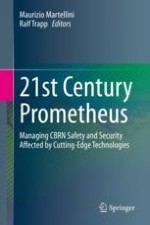2020 | OriginalPaper | Chapter
The Dark Side of Nuclear Energy: Risks of Proliferation from Domestic Fuel Cycle Technologies
Author : Sharon Squassoni
Published in: 21st Century Prometheus
Publisher: Springer International Publishing
Activate our intelligent search to find suitable subject content or patents.
Select sections of text to find matching patents with Artificial Intelligence. powered by
Select sections of text to find additional relevant content using AI-assisted search. powered by
